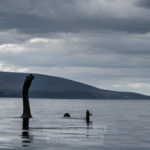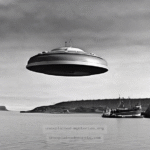What Happened During the 1976 Tehran UFO Incident, and Why Does It Remain Unexplained?
What Happened During the 1976 Tehran UFO Incident, and Why Does It Remain Unexplained?
The 1976 Tehran UFO incident is one of the most compelling and baffling cases in the history of UFO sightings. On September 19, 1976, residents of Tehran, Iran, experienced a series of extraordinary events that involved multiple witnesses—including military personnel and pilots—reporting the presence of unidentified flying objects. The significance of this incident lies not only in the sheer number of credible witnesses but also in the subsequent military engagement and the implications for our understanding of aerial phenomena. This post delves into the details of the Tehran UFO incident, exploring the historical context, evidence, theories, and ongoing debates surrounding this mysterious event.
Historical Context
The Tehran UFO incident occurred during a period of political turmoil in Iran, just before the 1979 Islamic Revolution. The country was already on edge, grappling with the fallout from the 1973 oil crisis and increasing tensions with Western nations. It was against this backdrop that the UFO sighting unfolded, which may have contributed to the seriousness with which the military and government took the incidents. Understanding the political and social climate of Iran at the time is crucial for contextualizing the responses to the UFO sightings.
In the late 1970s, Iran was a close ally of the United States, and the Iranian military was equipped with advanced technology, including F-4 Phantom fighter jets. The incident raised questions about national security, as the military was tasked with defending airspace from possible threats. As such, the response to the UFO sightings was not only about investigating a potential extraterrestrial presence but also about ensuring the safety of the Iranian people and the integrity of the nation’s air defenses.
The Events of the Night
On the evening of September 19, 1976, multiple witnesses in Tehran reported seeing a bright object in the sky. The first sighting was made by a civilian who alerted the authorities. The Iranian Air Force dispatched two F-4 Phantom jets to intercept the unidentified object. As the pilots approached, they experienced a series of unexplained technical failures, including the loss of radar and communication systems, which added to the mystery of the incident.
One of the fighter pilots, Colonel Parviz Jafarzadeh, later reported that as he got closer to the UFO, he felt an overwhelming sense of disorientation. He described the object as a pulsating light that changed colors and seemed to maneuver with incredible speed. Just as he attempted to engage the object, his instruments failed, forcing him to retreat. This pattern of equipment malfunctions was reported by both pilots and ground control, leading to speculation about the object’s capabilities.
Core Concepts and Theories
The Tehran UFO incident has spurred numerous theories, ranging from extraterrestrial visitation to advanced military technology. Some of the most prominent theories include:
- Extraterrestrial Hypothesis: Many believe that the object was of alien origin, given the unusual maneuvers and energy emissions reported.
- Secret Military Technology: Another theory posits that the object was a secret military aircraft, possibly from the U.S. or Soviet Union, testing Iranian air defenses.
- Natural Phenomena: Skeptics argue that the sightings could be attributed to atmospheric phenomena or misidentified aircraft.
Each of these theories presents a different perspective on what occurred that night, and they reflect the broader debate on the existence of UFOs and the potential for extraterrestrial life.
Evidence and Documentation
One of the most compelling aspects of the Tehran UFO incident is the wealth of documentation available. The events were recorded by multiple witnesses, including military personnel, civilian observers, and air traffic controllers. The U.S. Defense Intelligence Agency (DIA) also investigated the incident, and their reports remain classified, which has only fueled speculation.
– **Witness Testimonies:** Over 60 witnesses, including military and civilian personnel, reported seeing the UFO.
– **Military Engagement:** Two F-4 Phantom jets were dispatched, capturing the incident on radar.
– **Classified Reports:** The DIA’s ongoing investigation suggests the military took the sightings seriously.
In addition to witness accounts, the incident is notable for the radar data collected by the Iranian military. The radar operators monitored the object as it moved erratically, confirming that it was not a conventional aircraft. However, the lack of physical evidence, such as debris or clear photographs, leaves many questions unanswered.
Alternative Perspectives
While many enthusiasts advocate for the extraterrestrial hypothesis, there are alternative perspectives worth considering. Some researchers argue that the incident reflects the human propensity to misinterpret ambiguous stimuli, especially under stress. Cognitive psychology offers insights into how people perceive and recall extraordinary events, which can lead to embellishments or inaccuracies in reporting.
Moreover, some skeptics suggest that the Iranian military’s response may have been driven more by political factors than by a genuine belief in an extraterrestrial threat. Given the political climate of the time, the military may have been motivated to demonstrate its readiness and capability in the face of perceived threats, whether real or imagined.
Common Misconceptions and Clarifications
Several misconceptions persist about the Tehran UFO incident. One common belief is that the Iranian military confirmed the object was extraterrestrial. In reality, while the military acknowledged the sighting, they never concluded definitively what the object was. The lack of a clear explanation has led to speculation and conspiracy theories, but it is essential to differentiate between confirmed facts and conjecture.
Another misconception is that the incident has been widely covered up by the Iranian government. While it is true that some information remains classified, the incident has been documented in various reports, including those by international media outlets, UFO researchers, and government agencies. The lack of transparency regarding some classified documents has fueled speculation about what might still be hidden.
– The military confirmed alien origin.
– The incident was covered up entirely.
– All witnesses were unreliable or mistaken.
Best Practices for Investigation or Study
For those interested in investigating UFO incidents like the Tehran case, a structured approach is essential. Here are some best practices:
- Collect Evidence: Gather witness testimonies, radar data, and any available documentation.
- Cross-check Sources: Validate information through multiple credible sources to ensure accuracy.
- Maintain Objectivity: Approach the investigation with an open mind, considering all potential explanations.
- Engage Experts: Collaborate with professionals in fields such as aviation, psychology, and military history for a well-rounded analysis.
By adhering to these practices, investigators can contribute meaningfully to the discourse surrounding UFO sightings and enhance our understanding of such phenomena.
Future Developments and Ongoing Research
The Tehran UFO incident is not an isolated case; it is part of a broader interest in unidentified aerial phenomena (UAP) that has gained renewed attention in recent years. Governments around the world are beginning to take a more serious approach to investigating UAP, with the U.S. government formalizing its investigations through the UAP Task Force.
Ongoing research initiatives aim to declassify information related to UFO sightings, which may provide additional insights into incidents like the one in Tehran. As technology advances, the ability to capture high-resolution images and data from multiple angles could lead to more definitive conclusions regarding future sightings.
– Increased government transparency regarding UAP.
– Advancements in technology for data collection.
– Interdisciplinary collaboration among researchers.
Conclusion
The 1976 Tehran UFO incident remains one of the most perplexing and well-documented cases in UFO history. Its combination of credible witnesses, military engagement, and ongoing speculation keeps it alive in public consciousness. While theories abound, the lack of definitive evidence leaves us grappling with questions about the nature of the unidentified object and its implications for our understanding of aerial phenomena.
As research into UFOs and UAP continues to evolve, the Tehran incident serves as a critical case study that highlights the complexities of human perception, military engagement, and the potential for extraterrestrial life. Whether the truth is ultimately revealed remains to be seen, but the quest for understanding continues to captivate our imagination.
Other Articles
Recent Posts
- What Happened to Flight MH370? The Conspiracy Theories That Still Haunt Us
- What Secrets Lurk Within the Walls of the Infamous Trans-Allegheny Lunatic Asylum?
- What Evidence Supports the Existence of Bigfoot in the Pacific Northwest?
- What Happened to the Indus Valley Civilization? Unraveling the Mysteries of Ancient Urban Life
- Can Telepathy Be Scientifically Proven Through Laboratory Evidence?







